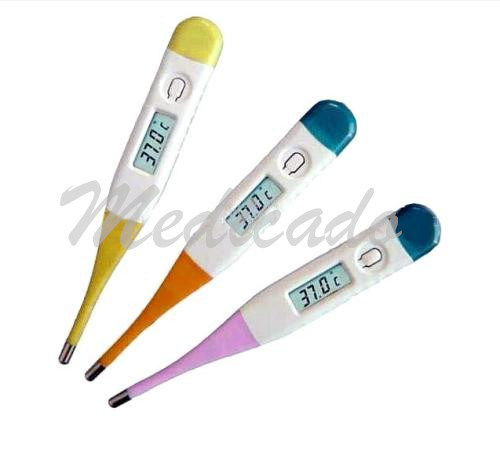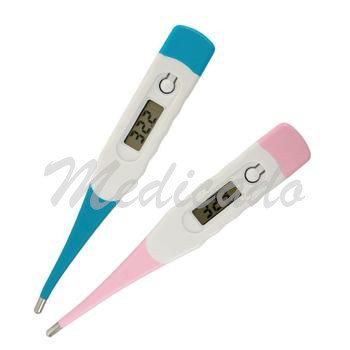Thermometer (QDHSK-010)
Polysaccharides are polymeric carbohydrate molecules composed of long chains of monosaccharide units bound together by glycosidic linkages, and on hydrolysis give the constituent monosaccharides or oligosaccharides. They range in structure from linear to highly branched. Examples include storage polysaccharides such as starch and glycogen, and structural polysaccharides such as cellulose and chitin. Polysaccharide Series,Cordyceps Polysaccharide,Hericium Erinaceus Polysaccharide,Goji Polysaccharide Excellent Health Products Co.,Ltd. , http://www.sino-excellent.com
Digital thermometer water proof, high accuracy, flexible
Armpit thermometer s, m, l
Room thermometer out-room, inner room, difference style
Test range: 32.0-42.9.
Resolution: 0.1
Measuring accuracy: within 36.0 ºC to 39.0 ºC tolerance is plus or minus 0.1 ºC, lower than 36.0 ºC or above 39.0 ºC when tolerance is plus or minus 0.2 ºC (in the standard room temperature is 23 ºC, as measured in the constant temperature water tank)
Monitor: LCD digital display mode.
Memory function: built-in memory, can realize the previous measurement value.
Buzzer: beeping when measured.
Auto power-off:About 30 seconds
Battery: DV3V (model CR2032 button battery)
Method of application:
1.The thermometer is removed from the collection box. Turn on the power and press the power switch.
2.The thermometer is removed from the collection box. Turn on the power and press the power switch.
3.When you start to make a prediction, the wait symbol will continue to display.
4.About 8 seconds later, the buzzer rang and measured.
5.A smiling face is normal body temperature, crying face for body temperature exceeds the alarm temperature 37.5 ºC, need medical treatment.
6.At the end of the measurement, the product screen will display the measured data, and there will be no operation. About 30 seconds will automatically enter the shutdown state.
7.Press the switch to turn off the power again and put it in the storage box.
Â
Clinic thermometer oral/rectal
Digital thermometer water proof, high accuracy, flexible
Armpit thermometer s, m, l
Room thermometer out-room, inner room, difference style
Test range: 32.0-42.9.
Resolution: 0.1
Measuring accuracy: within 36.0 ºC to 39.0 ºC tolerance is plus or minus 0.1 ºC, lower than 36.0 ºC or above 39.0 ºC when tolerance is plus or minus 0.2 ºC (in the standard room temperature is 23 ºC, as measured in the constant temperature water tank)
Monitor: LCD digital display mode.
Memory function: built-in memory, can realize the previous measurement value.
Buzzer: beeping when measured.
Auto power-off:About 30 seconds
Battery: DV3V (model CR2032 button battery)
Method of application:
1.The thermometer is removed from the collection box. Turn on the power and press the power switch.
2.The thermometer is removed from the collection box. Turn on the power and press the power switch.
3.When you start to make a prediction, the wait symbol will continue to display.
4.About 8 seconds later, the buzzer rang and measured.
5.A smiling face is normal body temperature, crying face for body temperature exceeds the alarm temperature 37.5 ºC, need medical treatment.
6.At the end of the measurement, the product screen will display the measured data, and there will be no operation. About 30 seconds will automatically enter the shutdown state.
7.Press the switch to turn off the power again and put it in the storage box.
Â
Polysaccharides are often quite heterogeneous, containing slight modifications of the repeating unit. Depending on the structure, these macromolecules can have distinct properties from their monosaccharide building blocks. They may be amorphous or even insoluble in water. When all the monosaccharides in a polysaccharide are the same type, the polysaccharide is called a homopolysaccharide or homoglycan, but when more than one type of monosaccharide is present they are called heteropolysaccharides or heteroglycans.
Natural saccharides are generally of simple carbohydrates called monosaccharides with general formula (CH2O)n where n is three or more. Examples of monosaccharides are glucose, fructose, and glyceraldehyde. Polysaccharides, meanwhile, have a general formula of Cx(H2O)y where x is usually a large number between 200 and 2500. When the repeating units in the polymer backbone are six-carbon monosaccharides, as is often the case, the general formula simplifies to (C6H10O5)n, where typically 40≤n≤3000.
As a rule of thumb, polysaccharides contain more than ten monosaccharide units, whereas oligosaccharides contain three to ten monosaccharide units; but the precise cutoff varies somewhat according to convention. Polysaccharides are an important class of biological polymers. Their function in living organisms is usually either structure- or storage-related. Starch (a polymer of glucose) is used as a storage polysaccharide in plants, being found in the form of both amylose and the branched amylopectin. In animals, the structurally similar glucose polymer is the more densely branched glycogen, sometimes called "animal starch". Glycogen's properties allow it to be metabolized more quickly, which suits the active lives of moving animals.
Cellulose and chitin are examples of structural polysaccharides. Cellulose is used in the cell walls of plants and other organisms, and is said to be the most abundant organic molecule on Earth.It has many uses such as a significant role in the paper and textile industries, and is used as a feedstock for the production of rayon (via the viscose process), cellulose acetate, celluloid, and nitrocellulose. Chitin has a similar structure, but has nitrogen-containing side branches, increasing its strength. It is found in arthropod exoskeletons and in the cell walls of some fungi. It also has multiple uses, including surgical threads. Polysaccharides also include callose or laminarin, chrysolaminarin, xylan, arabinoxylan, mannan, fucoidan and galactomannan.